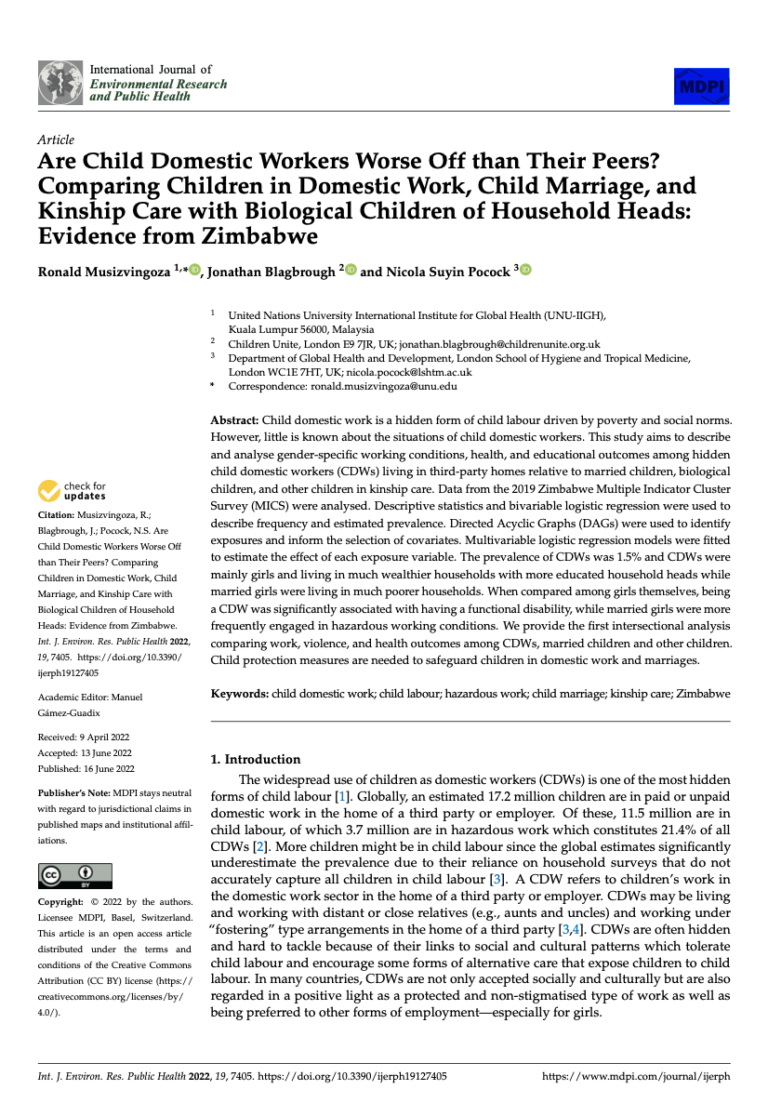Child domestic work is a hidden form of child labour driven by poverty and social norms. However, little is known about the situations of child domestic workers. This study aims to describe and analyse gender-specific working conditions, health, and educational outcomes among hidden child domestic workers (CDWs) living in third-party homes relative to married children, biological children, and other children in kinship care. Data from the 2019 Zimbabwe Multiple Indicator Cluster Survey (MICS) were analysed. Descriptive statistics and bivariable logistic regression were used to describe frequency and estimated prevalence. Directed Acyclic Graphs (DAGs) were used to identify exposures and inform the selection of covariates. Multivariable logistic regression models were fitted to estimate the effect of each exposure variable. The prevalence of CDWs was 1.5% and CDWs were mainly girls and living in much wealthier households with more educated household heads while married girls were living in much poorer households. When compared among girls themselves, being a CDW was significantly associated with having a functional disability, while married girls were more frequently engaged in hazardous working conditions. We provide the first intersectional analysis comparing work, violence, and health outcomes among CDWs, married children and other children. Child protection measures are needed to safeguard children in domestic work and marriages.

